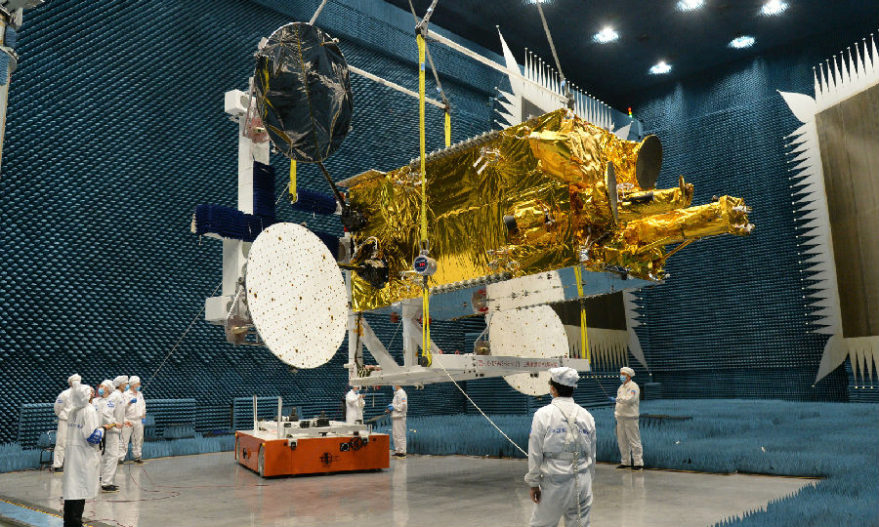HELSINKI — China Satcom has filed an insurance claim for the loss of the ChinaSat-18 communications satellite after failing to establish contact with the spacecraft.
A claim for ChinaSat-18, which SpaceNews previously reported was insured for $250 million, has been long expected.
The ChinaSat-18 communications satellite was launched Aug. 19 atop a Long March 3B launch vehicle from the Xichang Satellite Launch Center. Yet no contact was established with the satellite following separation.
A Nov.19 announcement (Chinese, pdf) to the Shanghai Stock Exchange noted that the launch was successful and the satellite separated from the launch vehicle normally. However attempts to communicate with the satellite were unsuccessful. According to an investigation by the satellite manufacturer the satellite suffered a complete power failure.
ChinaSat-18 remains in a geostationary transfer orbit instead of the intended circularized geosynchronous orbit, according to data from Space-Track.
Rescue attempts have, up to the present, failed, leading to the insurance claim. Even if communication with the satellite is established it will not have normal communication capabilities.
Also known as Zhongxing-18, ChinaSat-18 was built by the China Academy of Space Technology (CAST). It is the first satellite based on the DFH-4E, an enhanced version of China CAST’s established DFH-4 platform.
Of 21 DFH-4-based satellites, two have suffered solar array issues — the Nigerian communication satellite NigComSat-1 in 2008 and SinoSat-2 in 2006 — leading to their failures.
Apstar-6D, owned by APT Satellite, a subsidiary of ChinaSat, is also based on the DFH-4E and will feature a hybrid propulsion system. Launch of the high-throughput satellite was expected in 2019 but has now apparently been delayed.

Blows to space insurers
Initially underwritten by the People’s Insurance Company of China, ChinaSat-18 was reinsured on the international market, sources state.
China Satcom states that it will not suffer a net loss of investment if compensated fully.
Industry sources previously told SpaceNews that paying for a ChinaSat-18 claim, combined with July’s Vega launch failure that destroyed the Falcon Eye-1 remote sensing satellite the UAE insured for around $415 million, will likely exceed total insurance premiums for 2019.
With claims expected to eclipse insurance profits for a second year in a row, insurers are increasing rates and some even reconsidering their place in the market.
The Falcon Eye-1 claim, sources said, stands to be the largest single loss space insurers have covered to date.
China Satellite Communications Co., Ltd., (China Satcom), is a subsidiary of the China Aerospace and Science Technology Corporation (CASC). State-owned enterprise CASC is China’s main space contractor, with revenues of $37.7 billion in 2018.
The ChinaSat-18 satellite was intended to complete China Satcom’s coverage of China in HTS Ka-band capacity, joining ChinaSat-16, launched in May 2017.
China Satcom operates 16 geostationary satellites. U.S. operator Viasat, which announced a partnership with China Satcom in April to provide inflight connectivity in China, was understood to have plans to utilize ChinaSat-18.
Israeli company Gilat Satellite Networks was selected in 2018 to provide the ground network for ChinaSat-18, as it did for ChinaSat-16.
Caleb Henry contributed to this story from Bremen, Germany.
#Space | https://sciencespies.com/space/china-satcom-files-insurance-claim-over-chinasat-18-loss/
No comments:
Post a Comment